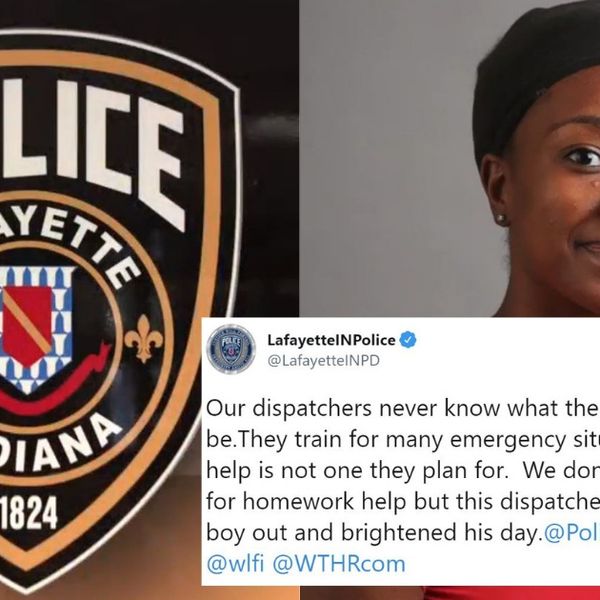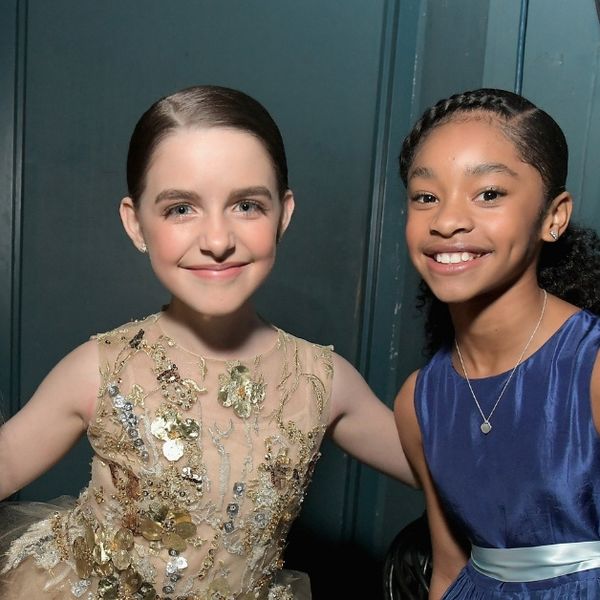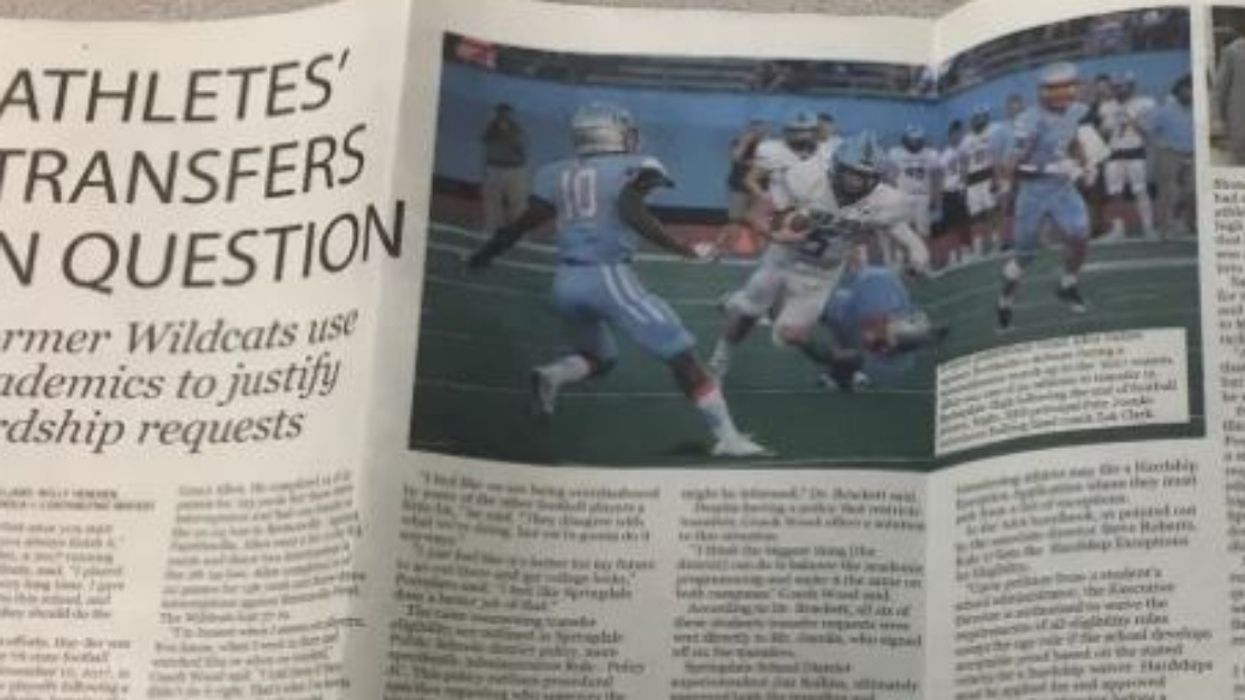August, 2003, LOS ANGELES - Winston Churchill said of history, "the farther back I look, the farther forward I can see." He believed that the lessons learned from history could prepare us to meet the challenges that we face in the future. Last month, I literally lived the value of Churchill's wisdom with a trip to Williamsburg, Virginia.
As if the 'transporter' from Star Trek had 'beamed' me back in time, I was living in the year 1774, just before the War for Independence from the onerous rule of the English King, George III. As a historic preservationist, I'd always wanted to visit Williamsburg, the colonial capital of Virginia, famous for its historic buildings that had been preserved, restored or recreated to pre-revolutionary times. I'd read that there would be guides authentically dressed to the period. However, I didn't realize how complete that experience back in time would be.
 The buildings were magnificently restored. What was truly impressive was the recreation of the context of the times. At the very center of Williamsburg was the Governor's Palace - as it was called. It was a substantial mansion but certainly not a palace in the grand European sense. But to the colonists, this imposing residence was the very symbol of opulence and the King's might. The houses of even the wealthy colonials seemed modest in contrast. Anchoring both ends of the main street, Duke of Gloucester, were the two significant structures of the capital, the Wren Building of the College of William and Mary, the seat of learning, at one end and the Capitol with the House of Burgesses, the seat of governance, at the other end. In the House of Burgesses, we sat in the seats that the Virginia representatives sat as we listened to the authentically clad historic interpreter recount all that transpired in this great hall. She pointed to a youngster and said that he may be sitting in the very seat from which Patrick Henry thundered against the King's taxes. He giggled self-consciously. She pointed to another teen-ager and said that she could be seated where Thomas Jefferson sat. She touched the wood of her seat with renewed awe. The docent personalized the past. She made history vibrantly real to a group of twenty-first century tourists. As the crowd moved on, I lingered in the great hall admiring the architecture. The docent approached me smiling. This faithful representative of history clad in colonial garb then, unexpectedly, broke the time barrier. Very discreetly, she whispered, "I have been a life-long Star Trek fans and was delighted to see you in the group. Would it be possible to get your autograph?" It was charming. I, who had depicted the future in fiction, connected with this wonderful spokesperson for the past. Arleen Donikowsky is a woman who spans the centuries with equal devotion to the past and the future.
The buildings were magnificently restored. What was truly impressive was the recreation of the context of the times. At the very center of Williamsburg was the Governor's Palace - as it was called. It was a substantial mansion but certainly not a palace in the grand European sense. But to the colonists, this imposing residence was the very symbol of opulence and the King's might. The houses of even the wealthy colonials seemed modest in contrast. Anchoring both ends of the main street, Duke of Gloucester, were the two significant structures of the capital, the Wren Building of the College of William and Mary, the seat of learning, at one end and the Capitol with the House of Burgesses, the seat of governance, at the other end. In the House of Burgesses, we sat in the seats that the Virginia representatives sat as we listened to the authentically clad historic interpreter recount all that transpired in this great hall. She pointed to a youngster and said that he may be sitting in the very seat from which Patrick Henry thundered against the King's taxes. He giggled self-consciously. She pointed to another teen-ager and said that she could be seated where Thomas Jefferson sat. She touched the wood of her seat with renewed awe. The docent personalized the past. She made history vibrantly real to a group of twenty-first century tourists. As the crowd moved on, I lingered in the great hall admiring the architecture. The docent approached me smiling. This faithful representative of history clad in colonial garb then, unexpectedly, broke the time barrier. Very discreetly, she whispered, "I have been a life-long Star Trek fans and was delighted to see you in the group. Would it be possible to get your autograph?" It was charming. I, who had depicted the future in fiction, connected with this wonderful spokesperson for the past. Arleen Donikowsky is a woman who spans the centuries with equal devotion to the past and the future.
There were no cars in the historic district. If one didn't walk, there were horse drawn carriages for those who were willing to pay. Most people walked - as did most people then. When one talked to the people dressed in colonial garb, they talked as people of their time. The shocking news that they shared with us was the report of some up in Boston who had dressed up as Indians and dumped English tea into Boston Harbor as a protest against the King's unjust tax. The people of Williamsburg certainly shared the sense of outrage against the tax. However, dumping the tea into the harbor, they thought, was rather "extreme." At noon, there was a fife and drum parade down Duke of Gloucester Street and we got a good sense of the martial spirit of the colonists. There were people dressed as colonials who spoke with Scottish or Hungarian accents because they had recently arrived as immigrants to America - as indeed there were immigrants back then. When we toured the houses of the wealthy, there were black slaves that did the cooking and cleaning. But they told us of others who had been freed and worked as blacksmiths or craftsmen. We visited a carpenter's workshop where furniture for the town was made in the traditional way. In this city of many races, backgrounds and social station, there was warmth, civility, graciousness, and a sense of community. We had dinner in historic eating establishments like the 18th century chophouse, King's Arm Tavern or Christiana Campbell's Tavern, which was George Washington's favorite, where menus offered traditional fare of the time. Costumed musicians playing the lute or other quaint period instruments provided the entertainment as we dined.
 The three day visit was truly "beaming back" into history. The sights, sounds, tastes, and spirit of colonial Williamsburg surrounded us completely. We got a real sense of the colonial spirit of mutual caring when we were caught in a sudden summer storm one evening just as we were leaving the historic district. Sopping wet, we were dashing back to our hotel when suddenly a lone s.u.v. came driving down the road. The driver opened the car window and shouted, "Here, use these," threw out umbrellas and drove off - no charge, no request for their return, just a simple gesture of kindness. We accepted the umbrellas with drenched gratitude. The colonial spirit of mutual help carried over into the 21st century.
The three day visit was truly "beaming back" into history. The sights, sounds, tastes, and spirit of colonial Williamsburg surrounded us completely. We got a real sense of the colonial spirit of mutual caring when we were caught in a sudden summer storm one evening just as we were leaving the historic district. Sopping wet, we were dashing back to our hotel when suddenly a lone s.u.v. came driving down the road. The driver opened the car window and shouted, "Here, use these," threw out umbrellas and drove off - no charge, no request for their return, just a simple gesture of kindness. We accepted the umbrellas with drenched gratitude. The colonial spirit of mutual help carried over into the 21st century.
From my visit to Williamsburg, I got a renewed understanding of the daily struggles and challenges faced by the Virginia colonists. Whatever their station, everyone had a role to fulfill and a responsibility to the community. There was a spirit of interdependence and mutual assistance and, at the same time, a pressing hunger for justice. The leaders then were extraordinary men of principal and vision. American democracy was born out of this mix. The ringing words, "We hold these truths to be self evident, that all men are created equal" were articulated out of the fusion of the spirit and events of these times. Yes, they lived with slavery. Yes, only educated landowners could vote. Yes, the women had no role in leadership. Yes, there were inconsistencies with the realities of the times. Yet, out of those societal discrepancies rose the vision of a nation of shining ideals, the framework for America. Our democracy is a continuing work in progress - and through the years, we have been making progress.
So, as a Californian, I am troubled by the mockery that is being made of our democratic electoral procedure by the irresponsibility of the recall of a recently re-elected governor. The recall is an important citizens' tool in a democracy to be used, as the constitution states, in cases of "malfeasance in office." It is not a tool to be used by bad losers of a legitimate election. I did not vote for the governor. I do not like him despite the fact that he and I are of the same political party. However, in a democracy, we accept the will of the majority and prepare for the next election to get rid of a bad politician. Just because you lost an election, that does not mean the losing minority has the right to recall him eight months later. I do not like President George Bush. I didn't vote for him. I feel he has been a disaster for the nation and the economy. He didn't even win the popular vote. However, the Supreme Court in a lawful procedure appointed him. Therefore, I have accepted that fact as part of the process and have waited to work for his replacement with the next election.
It is rather ironic that I am advocating the replacement of President Bush because last April I played a member of his cabinet, Secretary of Transportation Norman Mineta, in a television film which will be aired on Showtime cable channel on Sunday evening, September 7. It is titled, "DC 9/11: Time of Crisis," and is about the Bush administration during the days immediately following the horrors of September 11, 2001. My friend, Timothy Bottoms, plays President Bush. It is a tense drama of the response of the Bush administration to the trauma of horrific events. I hope you will all be able to catch it.
Arkansas High School Suspends Student Paper For Publishing 'Disruptive' Investigation Into Shady Football Transfers
Halle Roberts is the editor-in-chief of the Har-Ber Herald, the school newspaper for Springdale High School in Arkansas. The 17-year-old student was suspended after she wrote an investigative piece criticizing the transfer of five football players to a rival school.
Players are not allowed to be transferred to a different school because they would like to play for a different team. They are allowed to transfer only for academic reasons. So Roberts got to digging. Her paper filed FOIA requests and received official information from the Arkansas Activities Association saying that the students were transferred for academic reasons. However, the students themselves said otherwise.
Roberts quoted one student in her paper saying:
"We just want to go over there because we have a better chance of getting scholarships and playing at D1."
Another student told Roberts:
"I just feel like it's better for my future to go out there and get college looks."
Soon after the report was published, the superintendent of the district, Jim Rollins, asked the teacher advisor for the school paper, Karla Sprague, to take the story down. She obliged.
Rollins wrote a letter stating that the piece was:
"intentionally negative, demeaning, derogatory, hurtful and potentially harmful to the students addressed in those articles."
Roberts, undeterred, is still working on a new edition of the story that includes the school's censorship.
Mike Hiestand of the Student Press Law Center had this to say:
"School officials at this point seem to me to have completely thrown up their hands and said, ‘we’re not going to l… https://t.co/PgVYFlVAlM— Amber Jamieson (@Amber Jamieson) 1543687827.0
And Halle Roberts, who dreams of being an ESPN reporter, stated:
“They are like ‘well you raised an uproar, we’re going to try and silence you,’” said Halle Roberts, 17, the editor… https://t.co/6dKFeF0so4— Amber Jamieson (@Amber Jamieson) 1543690272.0
People were impressed with Roberts.
@hallecole21 @BuzzFeedNews I'm so proud of you! You're not just fighting for yourself, you're fighting for student… https://t.co/hjVIvzstZ1— 🌺Lisa Daily is writing⛱ (@🌺Lisa Daily is writing⛱) 1543718652.0
@hallecole21 @BuzzFeedNews I shared your story on my Facebook page and am so proud of you kids for telling the stor… https://t.co/9gekpHSwey— Derryl Trujillo (@Derryl Trujillo) 1543694164.0
@hallecole21 @BuzzFeedNews Keep up the fight Halle!!— Katie Maner (@Katie Maner) 1543762811.0
Some had harsh words for the school's administration.
@BuzzFeedNews @KatinaParon The principal and the superintendent should be fired, not the teacher. And the students… https://t.co/AfE6JTmowp— Jody Beck (@Jody Beck) 1543754569.0
@ambiej @BuzzFeedNews Abuse of power by the school administration— Lovehersports50 (@Lovehersports50) 1543686742.0
@ambiej Hey @sdaleschools School board members. Why are you allowing Arkansas Har-Ber High School Principal Paul Gr… https://t.co/8pdT0St1FO— Nancy Levine (@Nancy Levine) 1543693785.0
And most had high praise for Roberts and the other student journalists working on this piece.
A great example of investigate student journalism, and why it needs more recognition. https://t.co/s4MBLn0HiN— Gabija Gataveckaitė (@Gabija Gataveckaitė) 1543692451.0
Much to appreciate about @ambiej’s reporting on this Arkansas school district’s effort to suppress a high school pa… https://t.co/fIk5vTaWCZ— Pat Berry (@Pat Berry) 1543688372.0
High school students do real journalism, school district immediately tries to shut them down, despite state law gua… https://t.co/HqOgXTv1bl— Jeff Amy (@Jeff Amy) 1543692270.0
Oh this is the good stuff. I love this editor. Great work. Stand for journalists. https://t.co/QlrTTzrqs8— Scott Lewis (@Scott Lewis) 1543693549.0
And Halle Roberts herself closed by saying:
thank you so much. #freedomofthepress https://t.co/LsjWT7nycD— halle roberts (@halle roberts) 1543685392.0
Fight on, Halle!
This Store Clerk's Reaction To A Stolen Sneaker Prank Should Earn Him Employee Of The Month
Twitter user @HarvinthSkin decided to give a sales associate as his local shoe store a heart attack with a silly prank. All over the internet, people are sharing the prank and sending their well-wishes to the poor worker who experienced a moment of pure panic!
I had to give it a try? 😂🤷🏾♂️ Instagram : @harvinthskin https://t.co/Am45kGWYLQ— Harvinth Skin (@Harvinth Skin) 1543237039.0
Don't worry too much about the unfortunate sales employee, however—it turns out he was given a raise as a consolation shortly thereafter!
I apologised and gave man like Martin a hug after that! 😂😂😂 JD Sports, give him a raise! 💵 Do not try this unless you’re Zizan ⛔️— Harvinth Skin (@Harvinth Skin) 1543238141.0
The owner of the shoe store made clear to Skin that his employees were not to be messed with.
IM SO HAPPY THAT MAN LIKE MARTIN IS SEEN HERE WITH THE BOSS OF JD SPORTS ASIA AND IS GETTING A RAISE FOR HIS VALIAN… https://t.co/vL5QO2xCB5— Harvinth Skin (@Harvinth Skin) 1543300966.0
The Big Boss of JD Sports MY! Fuck me 😂😂😂🙃🙃🙃 https://t.co/nq3O0bdS92— Harvinth Skin (@Harvinth Skin) 1543239495.0
On Twitter, people loved the sales clerk's reaction to Skin running out of the store.
@harvinthskin That sales be like https://t.co/0i27D7vIWK— Ignasius Kurniawan (@Ignasius Kurniawan) 1543239042.0
@harvinthskin Best one yet cause he went out the store lmao— Andradé (@Andradé) 1543265867.0
Some thought they may have reacted differently in the same situation...
@harvinthskin @thirdeyescribe Me watching you run out of the store like https://t.co/31kkJcHjOV— The Count 🙎🏼♂️ (@The Count 🙎🏼♂️) 1543370777.0
But everyone got a good laugh out of the innocent prank.
@harvinthskin @kxsxhh This shit was so funny....it made my day— Manvir (@Manvir) 1543247327.0
@harvinthskin @queenb0414 😂😂😂😂😂😂 https://t.co/bejrX57i6w— 💙 (@💙) 1543275269.0
@harvinthskin @iced_coffeee https://t.co/bqP08ZK3r9— Manuel Jr. (@Manuel Jr.) 1543358200.0
The incident also gave us some priceless reactions!
@harvinthskin “whew my bruce lee almost came out” https://t.co/SOUOZ4IzBE— Nyree. (@Nyree.) 1543344926.0
@harvinthskin @ClassyyMocha 🤣🤣🤣🤣🤣🤦♂️Saw his whole life n last paycheck that fast!!— ♈FZA of FUPA-Tang Clan🇧🇿 (@♈FZA of FUPA-Tang Clan🇧🇿) 1543288463.0
@sofarhangone @harvinthskin @ChiSupreme @llma95_ Run up? More like run out!! https://t.co/HwHu2TT4vO— Desi Kubrick (@Desi Kubrick) 1543320755.0
Remember, everyone: it's important to try before you buy!
@harvinthskin @mjcz1 @LeeODell84 @reevesyboi93 try before you buy. why not— 494949494949 (@494949494949) 1543512590.0
We all love a good meme, and the best memes often imitate life. Model Kendall Jenner is the latest target of the Instagram account @itsmaysmemes, which photoshops celebrities in hilariously oversized outerwear.
At least it looks cozy...
Soon, Vogue France tweeted the image and all hell broke loose.
Winter is coming ! https://t.co/obJe6bO87B— Vogue.fr (@Vogue.fr) 1540199684.0
The caption reads:
"Winter is coming !"
Indeed.
People made their own versions.
@VogueParis @KendallJenner oh okay... https://t.co/Willu5LSlN— ًleah (@ًleah) 1540383130.0
@VogueParis @KendallJenner Fixed it! https://t.co/ThTnfVSfvk— sleepy jorge (@sleepy jorge) 1540480172.0
@VogueParis @KendallJenner https://t.co/p5CTJDEiqJ— Ty ©️ (@Ty ©️) 1540502215.0
Some compared it to other strange fashion choices we've seen over the years.
@VogueParis @KendallJenner https://t.co/hnLvEvRJAB— Bouzid Van Der Woodsen (@Bouzid Van Der Woodsen) 1540230561.0
@VogueParis @KendallJenner New couple with @LennyKravitz?? https://t.co/oCS3WAi3Xd— がんばれ! (@がんばれ!) 1540248515.0
@VogueParis @KendallJenner https://t.co/zAB6xKmu8T— TheBowLegg’dOne (@TheBowLegg’dOne) 1540471862.0
And there were those who had some pretty interesting ideas about what this looked like.
How your girl looks when she says she's cold and you give her your coat https://t.co/louipQI66k— Jack Skellington (@Jack Skellington) 1540405914.0
This is what P.E. teachers would be wearing during winter while shouting at students to stop complaining that it’s… https://t.co/5qDubio0mX— اليشبا (@اليشبا) 1540392391.0
Perhaps we loved it because it did seem just avant garde enough for Jenner to actually wear. Turns out we all can! Well, sort of. The jacket is a digitally enlarged version of The Super Puff jacket at Aritzia. Even the non-Photoshopped version looks pretty cozy!
H/T: Huffington Post, Twitter
George R.R. Martin Just Confirmed A Popular 'Game Of Thrones' Fan Theory About White Walkers
Game of Thrones scribe George R.R. Martin is promoting his new book in the A Song of Ice and Fire series, and provided insight into a group of characters fans have been waiting to learn more about.
As an author known to inject symbolism into the fantastical worlds he creates, Martin revealed that the icy group of White Walkers from Game of Thrones personified climate change.
What the ancient humanoid race of icy creatures stand for is a concept many have theorized all along.
Now fans received confirmation from the author himself.
Martin may have prognosticated climate change while he was writing GoT. The cold that transcends upon Westeros sounds eerily familiar.
"It's kind of ironic," Martin told the New York Times.
"Because I started writing 'Game of Thrones' all the way back in 1991, long before anybody was talking about climate change."
"But there is — in a very broad sense — there's a certain parallel there. And the people in Westeros are fighting their individual battles over power and status and wealth."
He added:
"And those are so distracting them that they're ignoring the threat of 'winter is coming,' which has the potential to destroy all of them and to destroy their world."
"And there is a great parallel there to, I think, what I see this planet doing here, where we're fighting our own battles. We're fighting over issues, important issues, mind you — foreign policy, domestic policy, civil rights, social responsibility, social justice. All of these things are important."
Martin continued:
"But while we're tearing ourselves apart over this and expending so much energy, there exists this threat of climate change, which, to my mind, is conclusively proved by most of the data and 99.9 percent of the scientific community. And it really has the potential to destroy our world."
"And we're ignoring that while we worry about the next election and issues that people are concerned about, like jobs."
Marten stressed the importance of caring for the environment, adding that protecting it should be a top priority.
"So really, climate change should be the number one priority for any politician who is capable of looking past the next election."
"We spend 10 times as much energy and thought and debate in the media discussing whether or not N.F.L. players should stand for the national anthem than this threat that's going to destroy our world."
When the author was asked if he could "pick the best real-world, present-day match — politicians, celebrities" and pair them up with corresponding characters from his novels, Martin answered: "Pass."
Fire and Blood: 300 Years Before a Game of Thrones, is expected to be released on November 20.
H/T - NYtimes, Twitter, Mentalfloss















